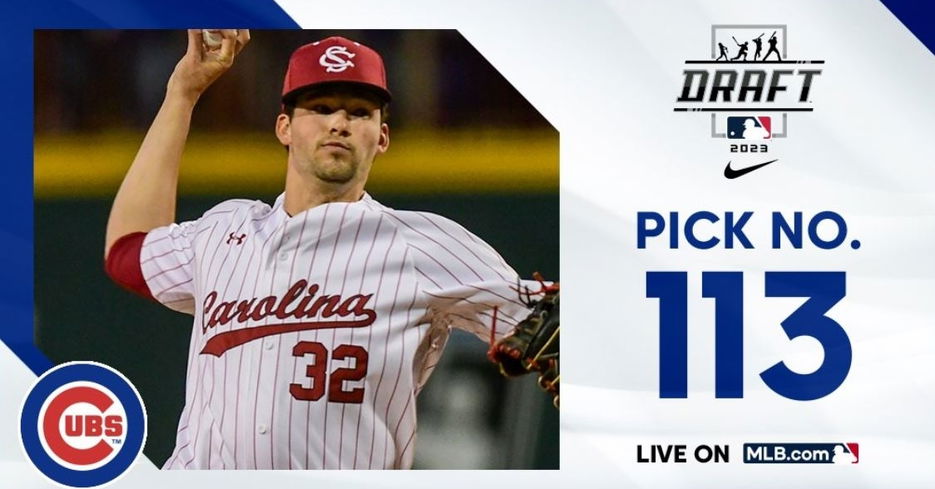
Getting to Know: Cubs fourth-rounder Will Sanders |
After going college-heavy with their first three picks of the 2023 MLB Draft, the Chicago Cubs continued to go that route in round four as they focused on experience over potential in this draft. Viewed as the 135th-best prospect in his class, the Cubs may have reached for him a bit, but they took Will Sanders at 113 overall.
The 21-year-old Sanders is an imposing figure on the mound, standing 6-6 and weighing 230 pounds. That is one big pitcher who already has the MLB frame that many coaches are looking for, and there may still be room for him to grow. Sanders has been a name to follow on the amateur circuit for a while, as scouts loved his projectability when he was a prep star in Georgia. Initially expected to be taken in the top seven rounds of the 2020 MLB draft, the COVID shutdown prevented that from happening as he ultimately went undrafted before choosing to enroll at South Carolina University. That was ultimately the best decision that Sanders could have made, as he added more than 20 pounds of muscle to his frame to make him stronger while his stuff got better and stronger also. Sanders was one of the fastest-rising prospects following the 2022 season, and many had him as a potential round-one or round-two selection. Then came an inconsistent Junior season that saw his draft stock take a significant hit. He then got hurt towards the end of the season, and he missed the final three weeks, including the SEC tournament. When you look at his overall body of work this season, you can see where the inconsistencies lie, as he was coming off a solid sophomore campaign in 2022. During that season, he made 15 starts and finished with a 7-3 record to go with a 3.43 ERA. One year later, Sanders bounced between starter and long relief, where he posted a 4-4 mark in just 66 innings pitched. The overall lack of consistency this season was a concern, but the Cubs are willing to look past it. Unlike most pitchers who tend to struggle when their command is terrible, Sanders didn't have that problem, but instead, a different issue. His biggest issue was missing bats with his fastball, as his fastball was hit hard all season. Sure, it sits in the 92-94 MPH range, but it lacks the life and movement you want to see and would often catch way too much of the plate. When Sanders is on, he can touch 96, but he must keep the ball down in the zone to be effective. While there are some legitimate concerns about his fastball, his secondary pitchers stand out the most and are something the Cubs are excited to dive more into. Sanders not only has one secondary pitch, but every single of his secondary pitchers are plus offerings that only a few can say they have. His 86 MPH change may be the best of them all, as it offers a lot of sink and tumbling action associated with it. Sanders also has an 84 MPH slider and an 82 MPH curve that has depth and can land for strikes to either side of the plate. He tends to favor the slider against lefties and the curve against righties, but both are equally as successful no matter who he throws them to. Besides the plus secondary pitches, his overall size is another attribute that stands out, as he gets tons of extension on his pitches while also giving them a strange angle. That makes it difficult for hitters to see and time out, which does help prevent a ton of hard contact for long periods. Even at that, Sanders does a great job of keeping his mechanics in sync, although his command did slip a bit this past season due to some mechanics issues on the mound. Once he is officially signed and sent to the team, the main goal for Sanders will be to improve his overall command and movement with his heater while also putting on more strength.




